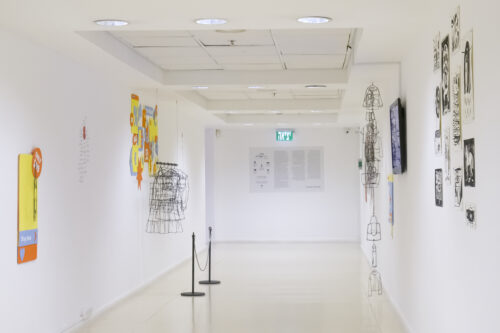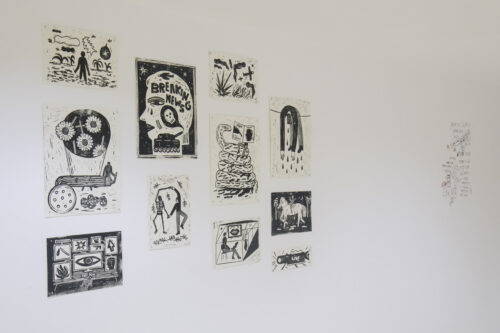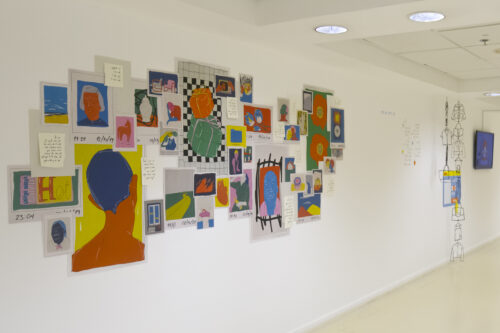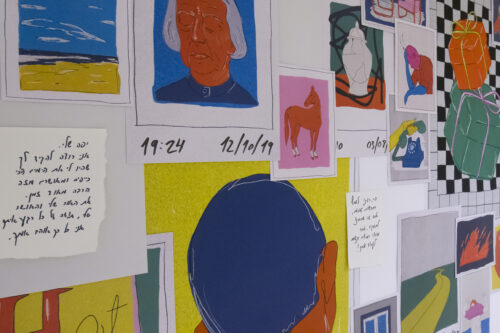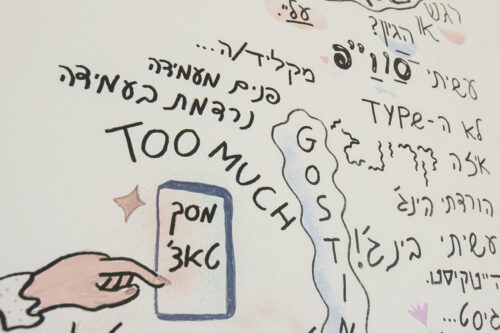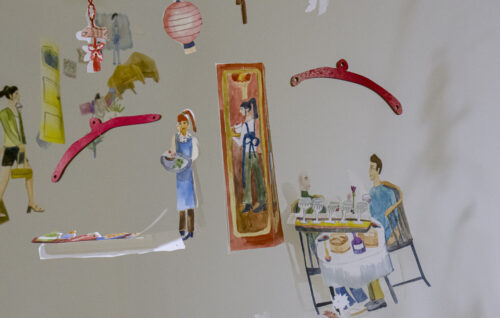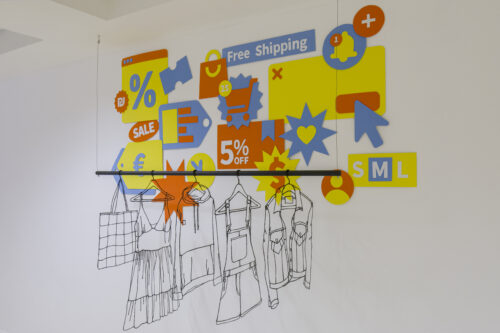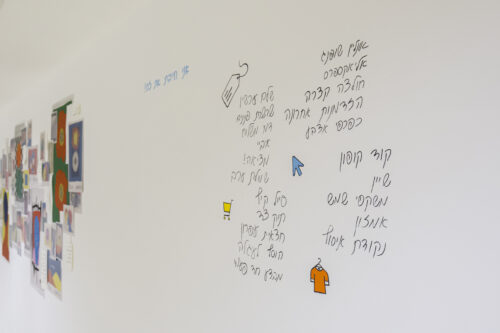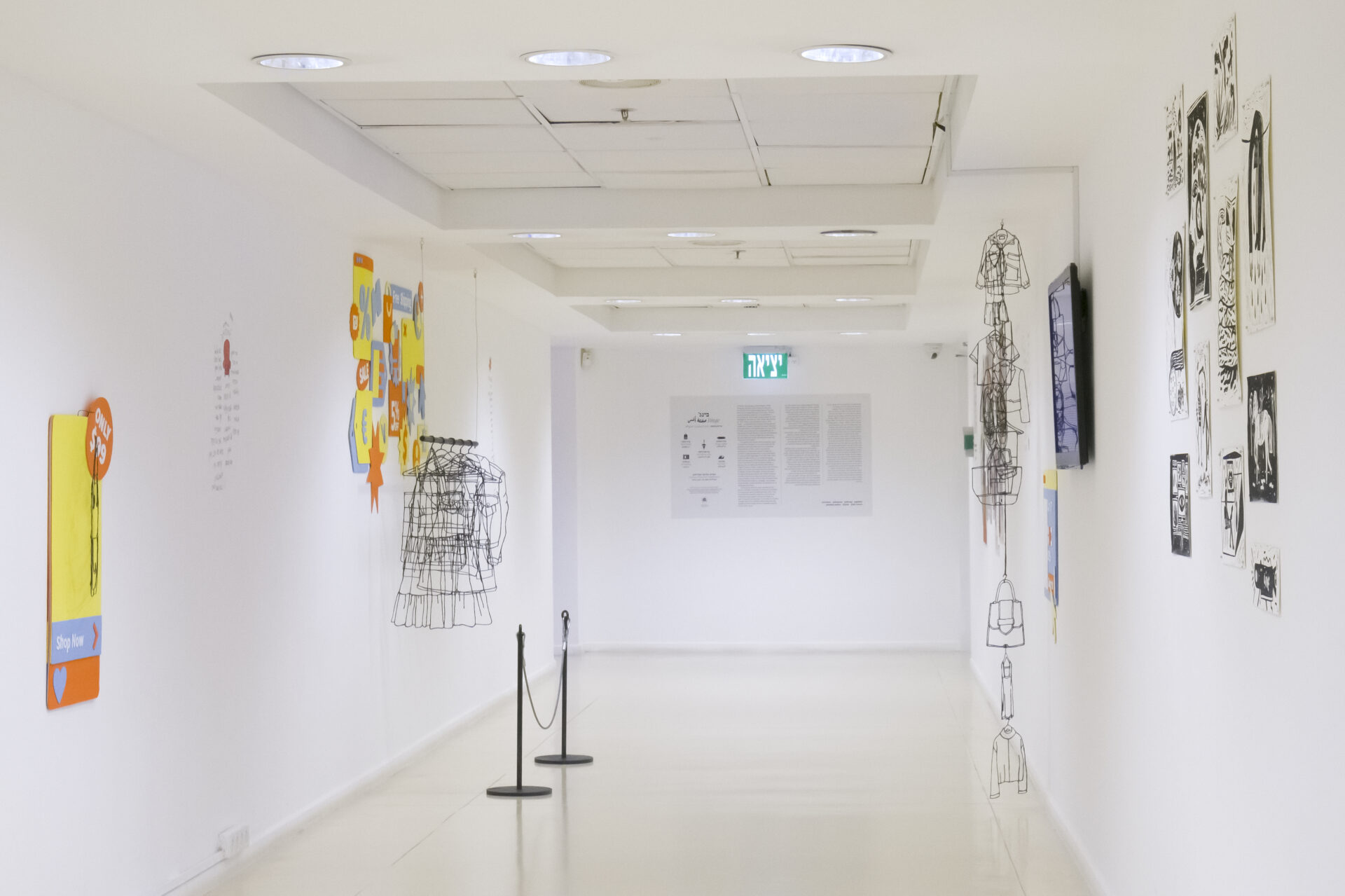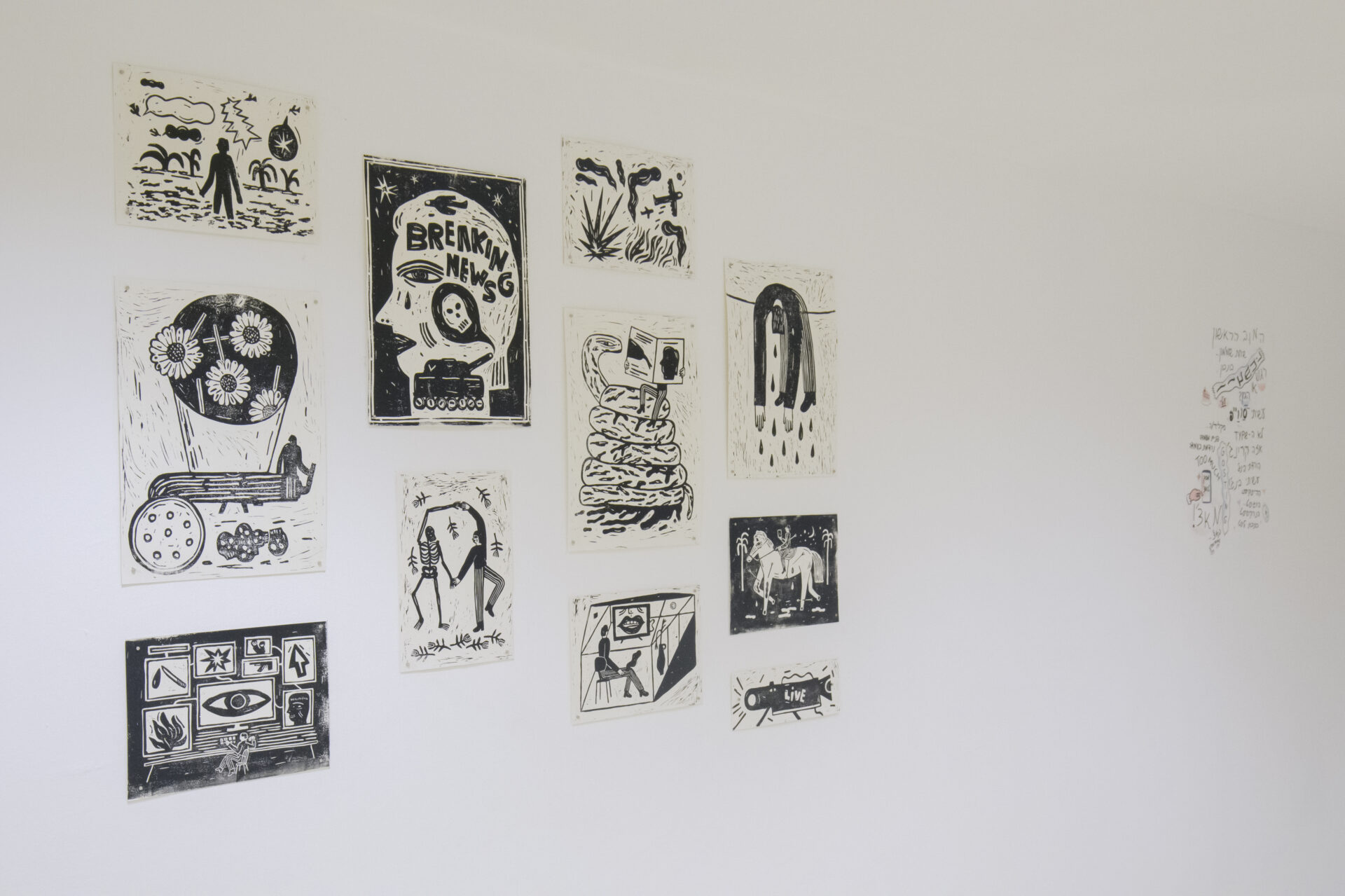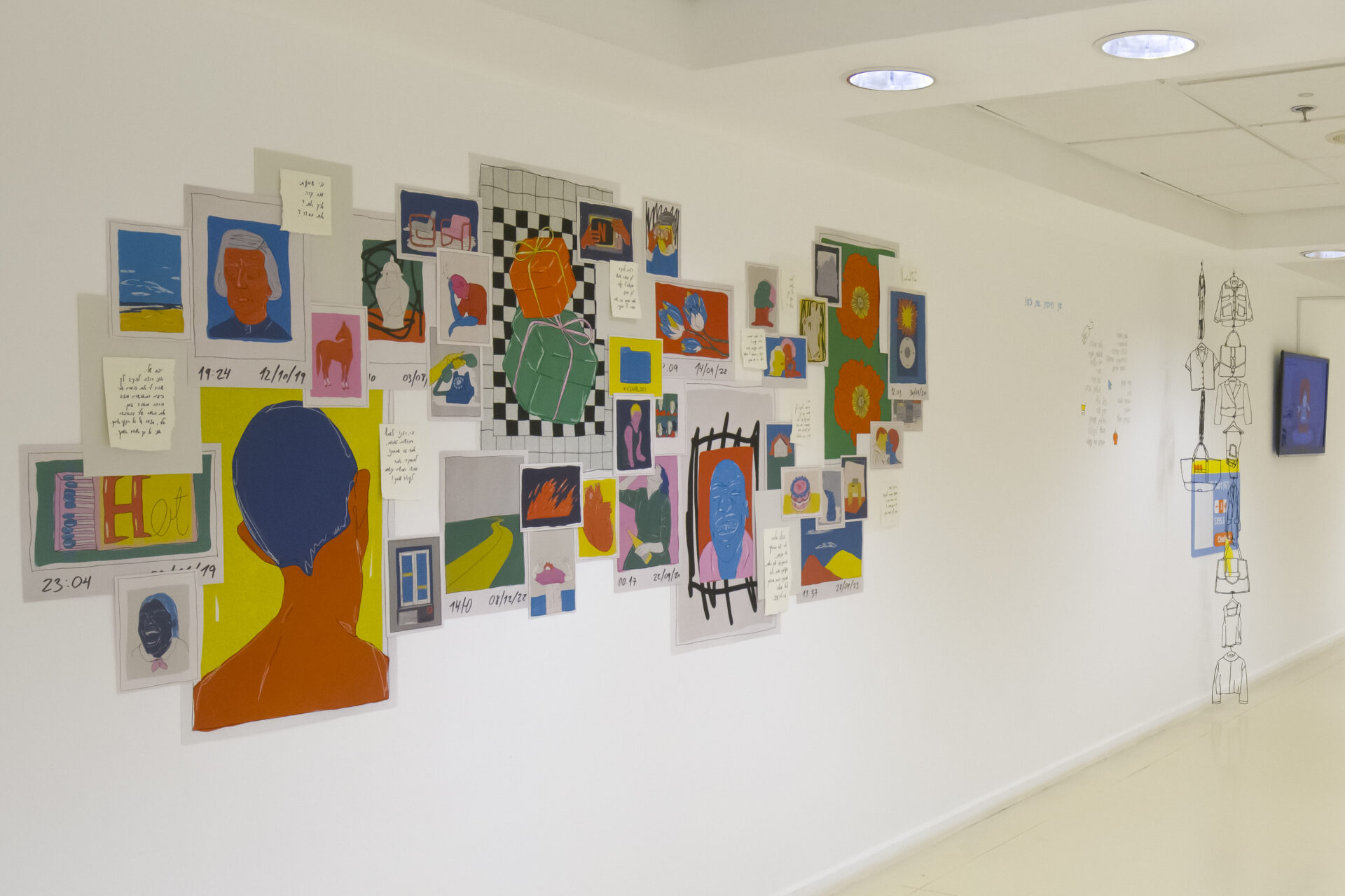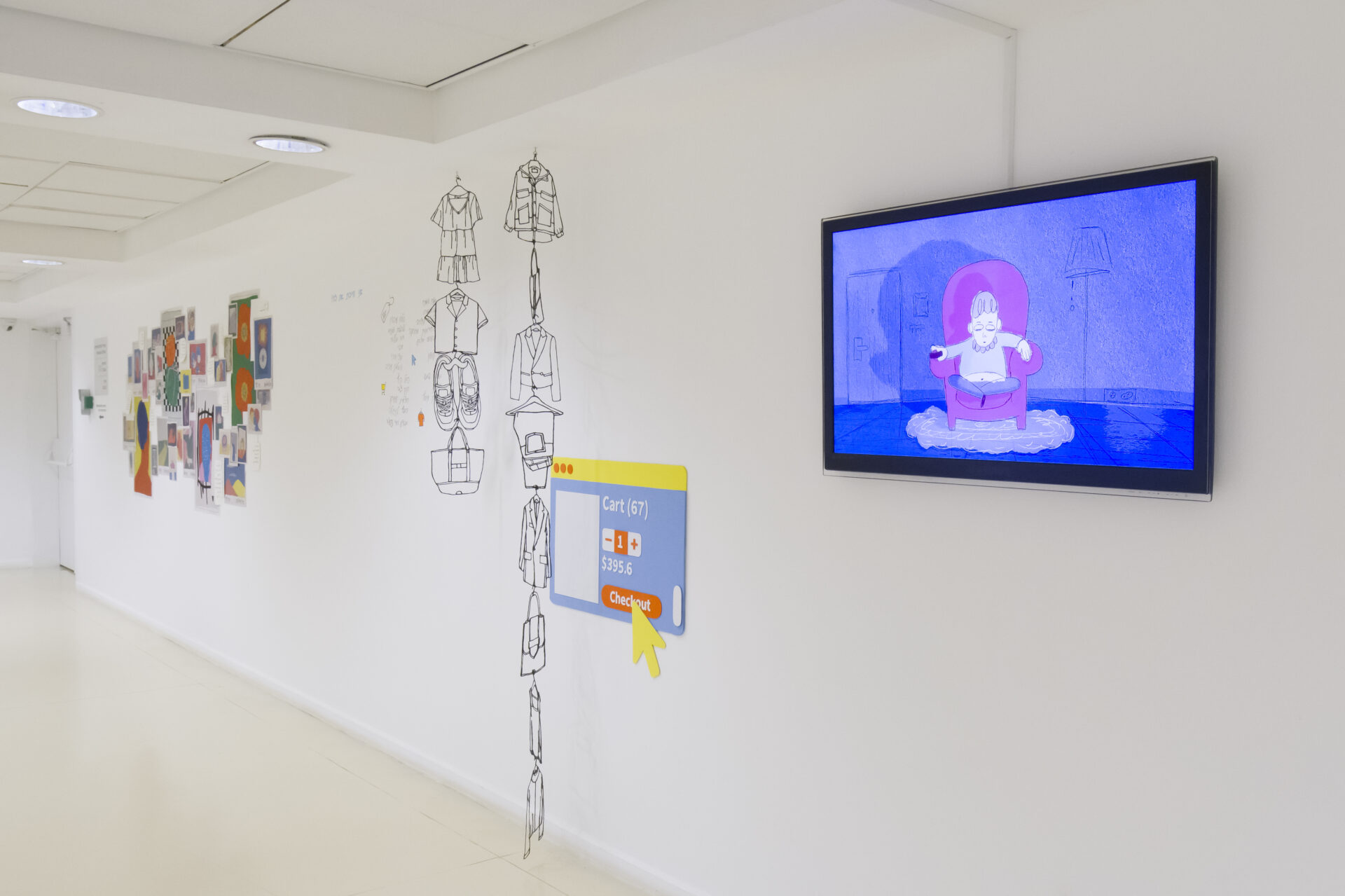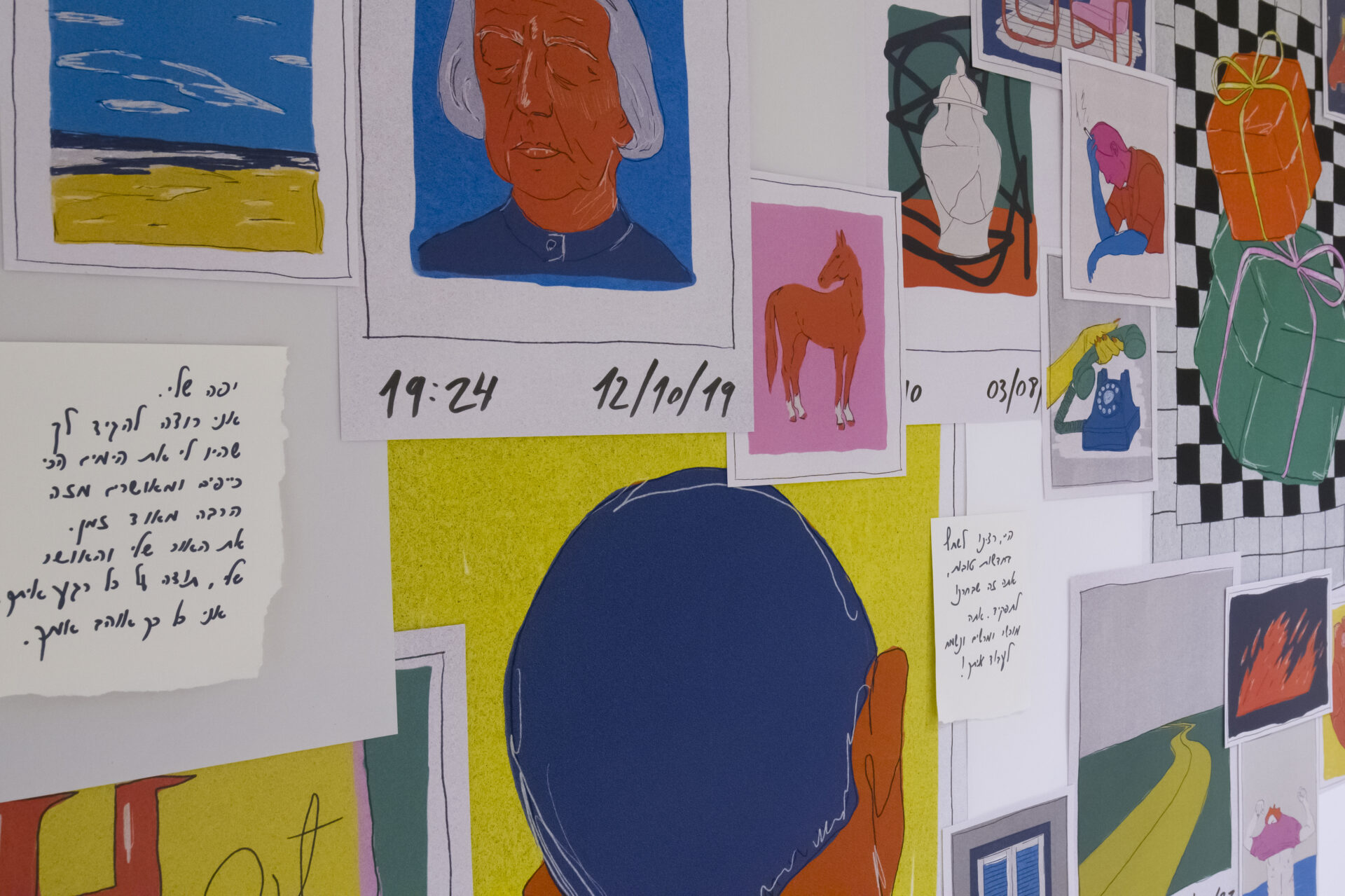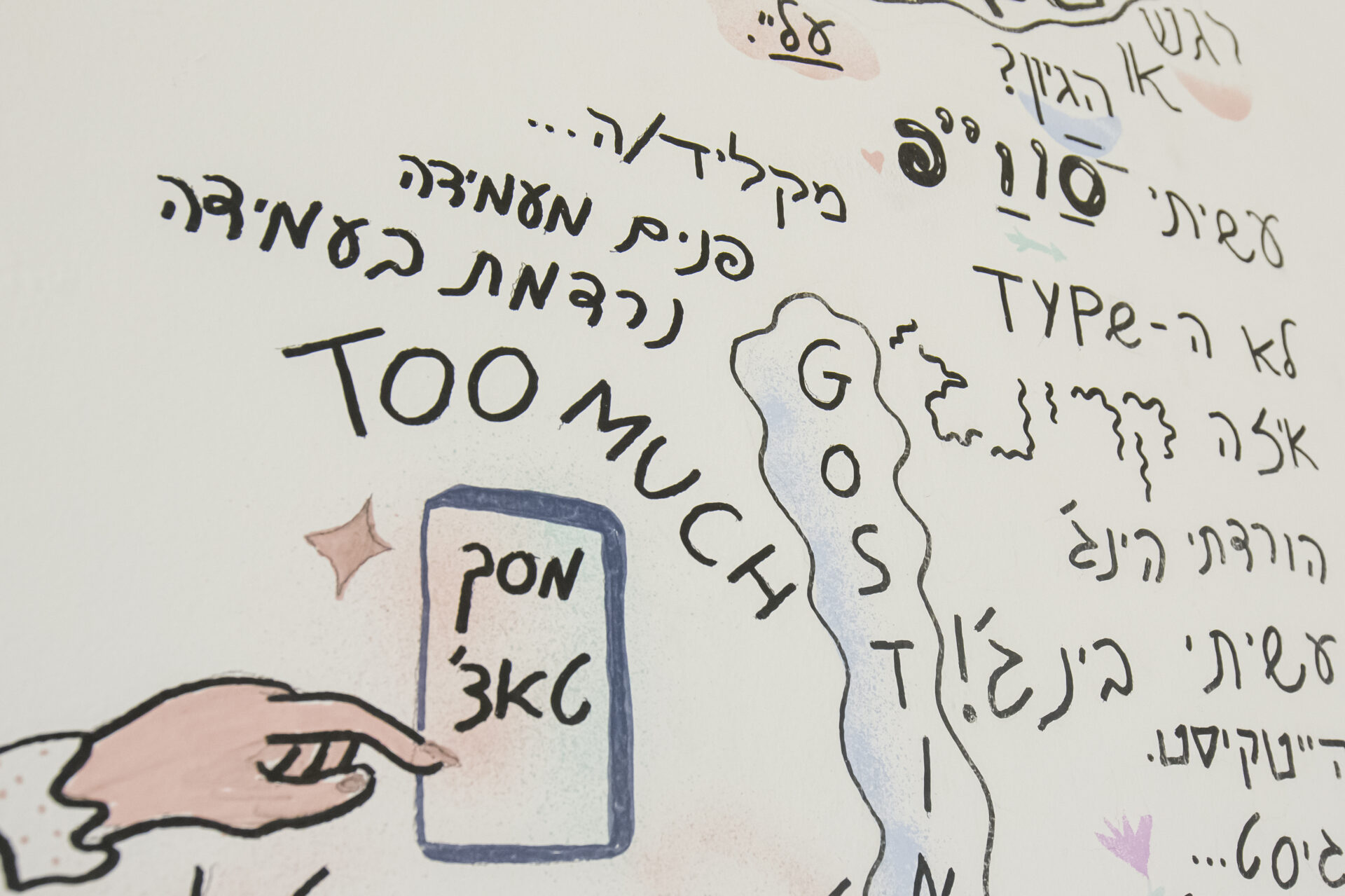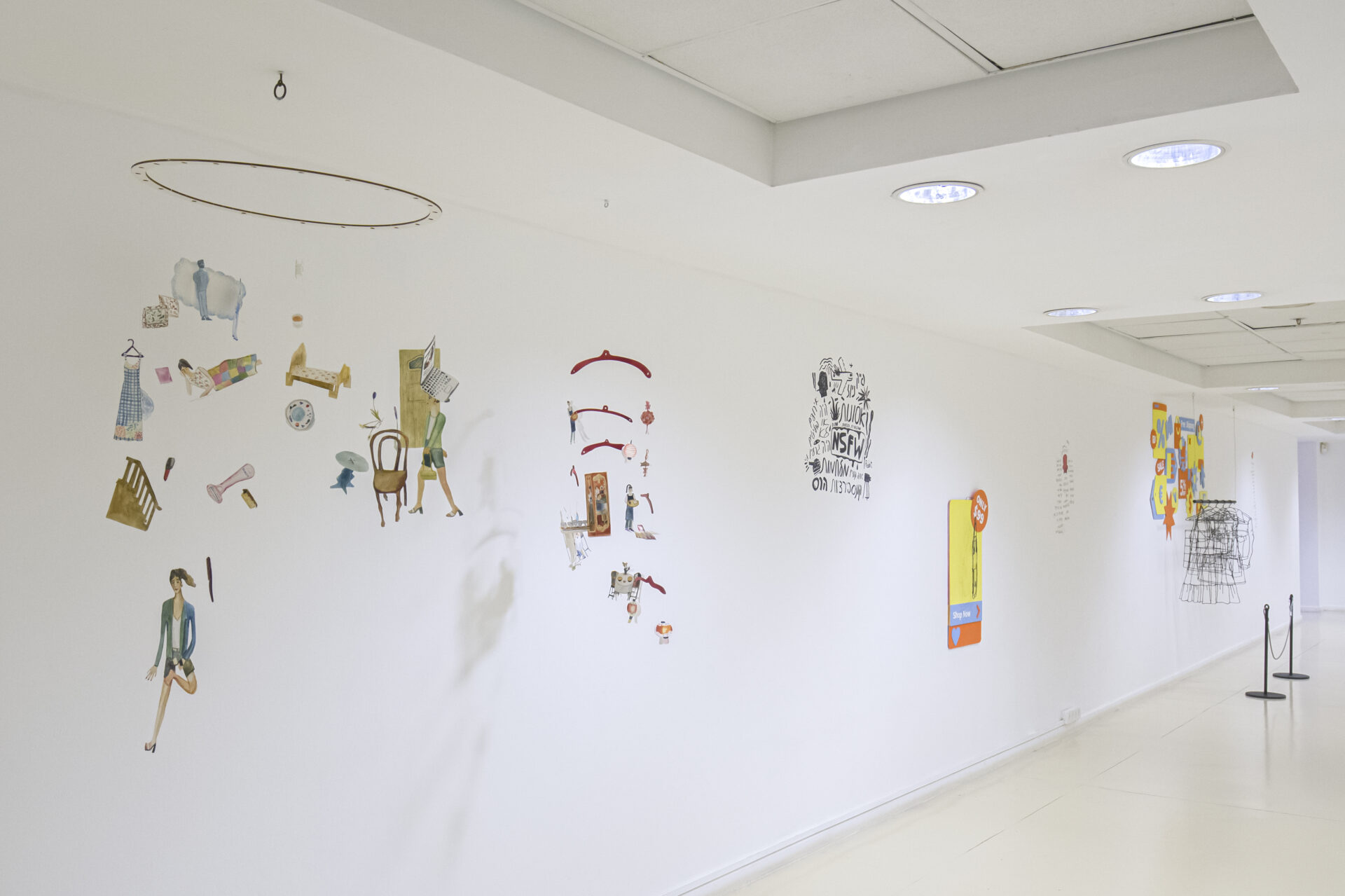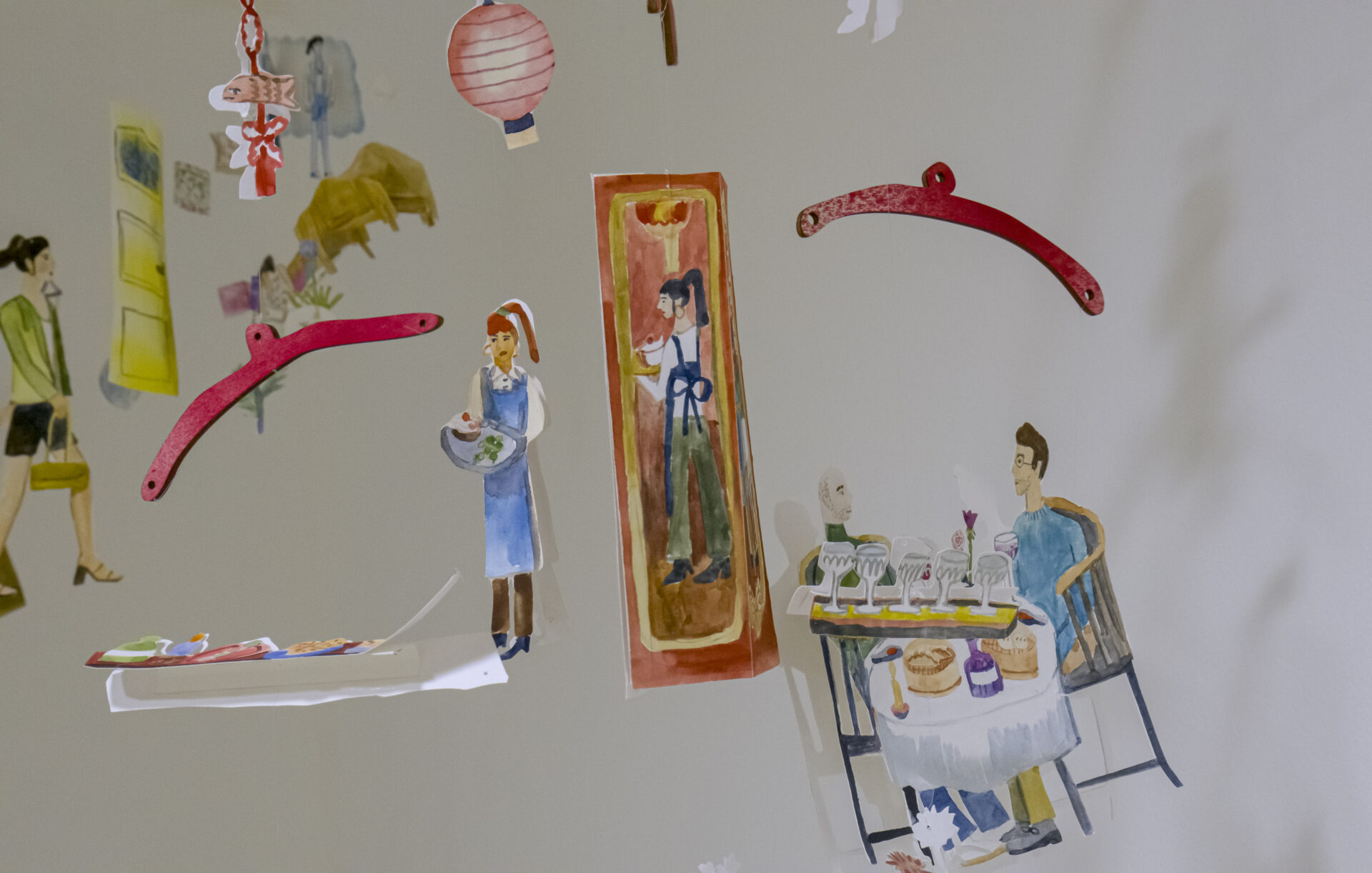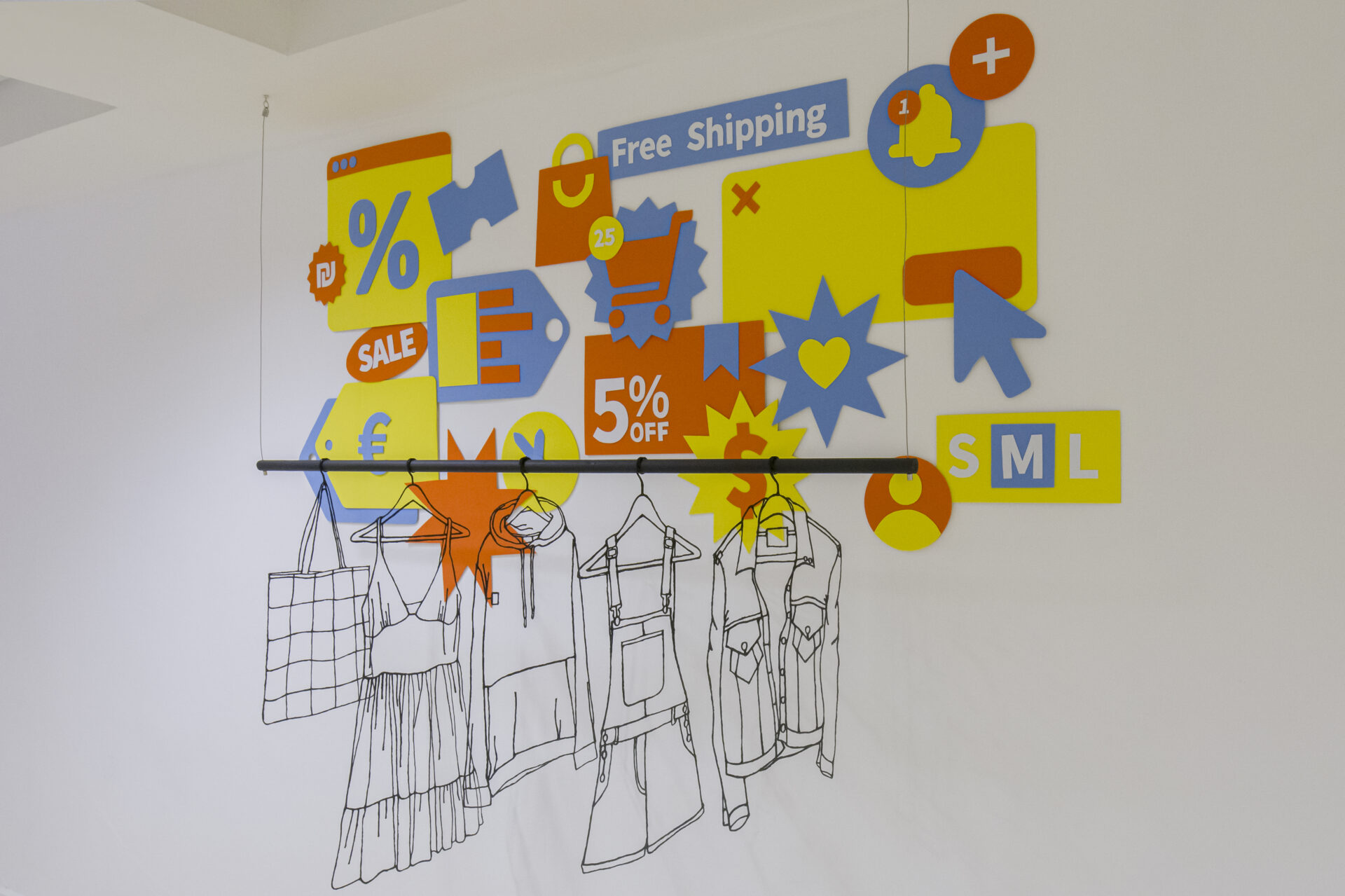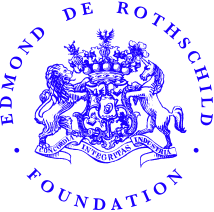A collaboration between the Edmond de Rothschild Center and the Herzliya Museum of Contemporary Art
TV series, dating apps, email threads, online shopping, disasters, and conspiracy theories are all part of the endless digital pursuit that has become an inseparable part of our lives. The five young illustrators featured in this exhibition – Shira Giladi (b. 1995, Israel), Sergey Isakov (b. 1991, Azerbaijan), Aviv Katz (b. 1996, Israel), Ben Molina (b. 1992, Israel), and Gai Safran Lulai (b. 1993, Israel) – completed their studies at design and art academies in Israel in the past five years. Like their entire generation, the digital sphere is a way of life for them and screens are an inseparable part of their being and self-identity. Their almost obsessive use of screens, at times bordering on addiction, also provides them with a temporary escape and distraction from reality.
Throughout the months of the exhibition, organized in collaboration with the Edmond de Rothschild Center, each of these five illustrators in turn will come into the exhibition space and offer visitors an illustrated interpretation of their world, using various techniques. In these short sessions, each will provide a unique perspective on how information is consumed and resonates in our daily lives. Shira Giladi will take visitors on an endless shopping spree through layers of 3D illustrations; Gai Safran Lulai will provide, through miniature mobiles, a glimpse into the dating world and relationships forged through a screen; Sergey Isakov will introduce visitors to a world of conspiracies that take place in hidden corners of the Web, and process them through printing techniques; Ben Molina will peer into the living rooms of each and every one of us using
animation tools; and Aviv Katz will lead visitors into a black hole of alerts, messages, and endless email threads, converting them into illustrations on postcards and letters.
At any given moment, each member of the group is invited to intervene in the work of another, to invade their space and disrupt their work. Thus, the exhibition presents a dynamic and evolving
interaction that enables visitors to witness an ever-changing work process. In this way, it provokes thought about the complex relationship between people and technology and our insatiable need for more, more, more.
